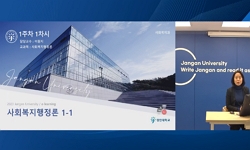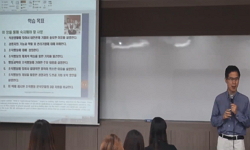본 논문은 민주노동당에 대한 사례분석을 통해서 대립과 경쟁 관계에 있던 두 개 이상의 정치사회운동단체가 하나의 정당에 합류하게 되는 배경과 요인을 탐색하는 것을 목적으로 한다. 1980...
http://chineseinput.net/에서 pinyin(병음)방식으로 중국어를 변환할 수 있습니다.
변환된 중국어를 복사하여 사용하시면 됩니다.
- 中文 을 입력하시려면 zhongwen을 입력하시고 space를누르시면됩니다.
- 北京 을 입력하시려면 beijing을 입력하시고 space를 누르시면 됩니다.

연구논문 : 라이벌 정치운동단체의 연합에 의한 정당건설: 민주노동당의 사례 = Formation of Political Party through the Merger of Political Movement Organizations: The Case of Democratic Labor Party of Korea
한글로보기https://www.riss.kr/link?id=A82649872
- 저자
- 발행기관
- 학술지명
- 권호사항
-
발행연도
2011
-
작성언어
Korean
- 주제어
-
KDC
340
-
등재정보
KCI등재
-
자료형태
학술저널
-
수록면
79-106(28쪽)
- 제공처
- 소장기관
-
0
상세조회 -
0
다운로드
부가정보
국문 초록 (Abstract)
본 논문은 민주노동당에 대한 사례분석을 통해서 대립과 경쟁 관계에 있던 두 개 이상의 정치사회운동단체가 하나의 정당에 합류하게 되는 배경과 요인을 탐색하는 것을 목적으로 한다. 1980년대 말과 1990년대 초반 이후 서로 다른 이념, 노선, 조직문화를 가지고 있었고 진보적 정치·사회운동의 주도권을 둘러싼 경쟁을 치열하게 벌였던 민족해방계열과 민중민주계열의 양대 세력은 1997년 대선 무렵 민주노총과 함께 국민승리21을 창당하였다. 그러나 대선 선거운동이 시작되면서 민족해방계열에 속하는 조직들이 대부분 이탈하여 경쟁 대립관계에 있는 정치운동단체의 연합으로 정당을 건설하려는 첫 번째 시도는 좌절되는 듯했다. 그러나 민중민주계열의 진보정치연합과 민주노총 그리고 민족해방계열의 일부 지역조직의 인사들은 1999년 초부터 다시 진보정당건설 사업을 재개하여 2000년 1월에 민주노동당을 창당하였다. 그 후 2001년 하반기부터 민주노동당이 재창당사업을 추진하면서 국민승리21로부터 이탈했던 민족해방계열의 조직들이 다시 합류하기 시작하여 2003년 11월 임시당대회가 열리는 무렵까지 민족해방 계열의 거의 모든 조직이 민주노동당에 들어왔다. 민주노동당의 회의자료, 인터넷 자료, 주요 활동가 대상 면접자료를 활용하여 라이벌 정치운동단체가 하나의 정당으로 합류하게 한 요인을 탐색한 결과, 사회주의권과 붕괴와 한국정치의 민주화 등과 같은 정치 사회적 조건의 변화와 이에 따른 양 계열의 이념과 노선의 차이 축소, 조직의 생존이라는 현실적 이해관계의 일치, 양대 계열 조직 지도부의 전락적 선택과 성공적 협상 등이 주요 요인임을 확인하였다. 그러나 조직해체의 위협에 대응하고 나아가 조직기반을 확대하기 위해 민주노동당 건설에 합류하거나 유인하였으나, 여전히 남아 있던 대북관계 내지 북한에 대한 입장과 조직문화의 차이를 심각하게 고려하거나 논의하지 않았기 때문에 창당 이후 파벌로 전환한 양대 계열 조직 간에 끊임없는 논란과 갈등의 소지를 남겨놓게 되었다.
다국어 초록 (Multilingual Abstract)
This article aims to find some factors which contributed to the merger of two rival political movement organizations-National Liberation faction and People`s Democracy faction. These two rival organizations, which had distinctive ideologies and platfo...
This article aims to find some factors which contributed to the merger of two rival political movement organizations-National Liberation faction and People`s Democracy faction. These two rival organizations, which had distinctive ideologies and platforms, and organizational cultures, had competed to take a hegemonic control over radical political-social movements since the late 1980s. In the late 1990s, however, they joined a new leftist party People`s Victory 21. And, then, those organizations of National Liberation faction, which left People`s Victory 21 in the middle of 1997 Presidential election, decided to return to a newly-formed left party-Democratic Labor Party-in September 2001 and continued to remain within the party. Using party documents, internet sources, and interviews with leading party activists, this paper found several factors contributing to the merger of rival organizations, for example, reduction in an ideological distance between them accompanying the collapse of communism, fear of organizations` dissolution, congruence in interest of the two factions-need for its own party from the part of National Liberation faction and need for grass-root organizations and sub-national leaders from the party of People`s Democracy faction, and successful negotiation for merger. Although successful in merging two rival organizations, both factions were constantly in conflict because they ignored or underestimated the differences between them, such as attitude toward North Korea and organizational culture. They did not work together to solve or harmonize these differences seriously, and finally split into two different parties in 2008.
동일학술지(권/호) 다른 논문
-
연구논문 : 대한민국 정부수립과정에서 이승만의 역할에 대한 재평가: 미군정시기 미국의 대한반도 정책을 둘러싼 이승만-하지의 갈등과 협력관계 분석
- 서울대학교 한국정치연구소
- 김용호 ( Yong Ho Kim )
- 2011
- KCI등재
-
- 서울대학교 한국정치연구소
- 권수현 ( Soo Hyun Kwon )
- 2011
- KCI등재
-
연구논문 : 생산의 세계화와 한국 자동차산업 생산네트워크의 재편
- 서울대학교 한국정치연구소
- 김순영 ( Soon Young Kim )
- 2011
- KCI등재
-
연구논문 : 한국의 대학원 정치학 교육 경쟁력 향상을 위한 방안
- 서울대학교 한국정치연구소
- 김남국 ( Nam Kook Kim )
- 2011
- KCI등재




 KCI
KCI KISS
KISS







